![]()
orientation
Orientation has a very small influence on the total global radiation (direct + diffuse) yield of the canyon in winter, spring and autumn, but a more significant influence in summer; in summer east-west canyons have a significant lower radiation yield than canyons with other orientations. These differences are almost completely attributable to the direct radiation yield. East-west canyons are thus preferable to reduce heat stress, UV damage and the UHI effect.
Orientation causes large differences in the distribution of the direct radiation yield over the separate canyon surfaces – street, facades and roof – and thus in outdoor thermal comfort as well as the potential for passive solar heating of the buildings along it. For a north–south canyon, the relative share of the radiation yield of each canyon surface is roughly constant throughout the year. This is because the street axis corresponds to the symmetry axis of the solar path. For east-west canyons, the relative radiation yield of the street surface increases from winter to summer and that of the dwelling thus decreases, which is positive with regard to passive solar heating (and cooling) strategies. The pattern of northwest-southeast and northeast-southwest canyons lies in between that of the east-west and north-south canyons. Not only the relative radiation yield, but also the absolute radiation yield of dwellings in east–west canyons is larger in winter compared to other orientations. From the point of view of maximizing solar exposure of the building envelope in winter and minimizing it in summer, dwellings can therefore best be arranged in an east–west street direction.
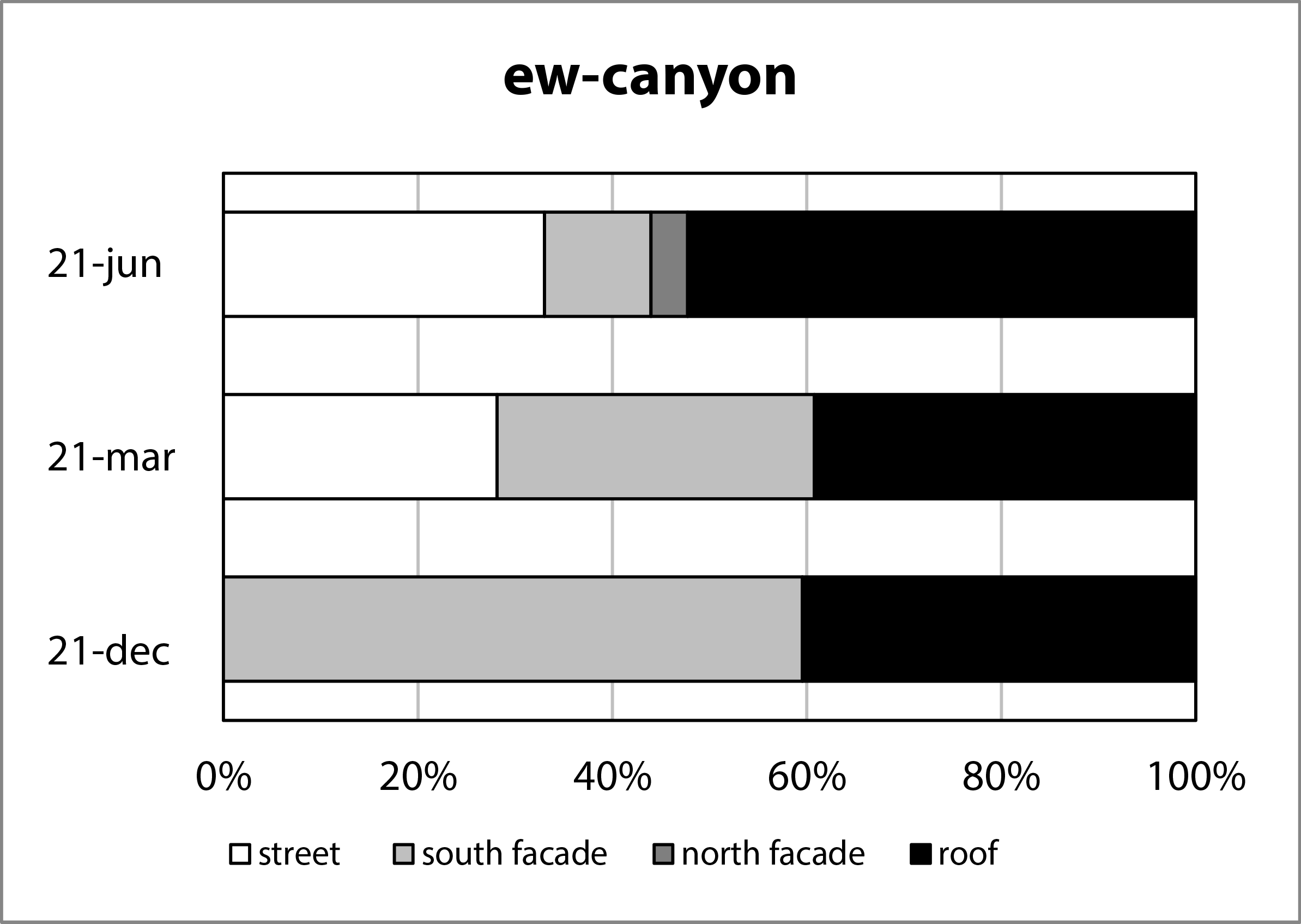
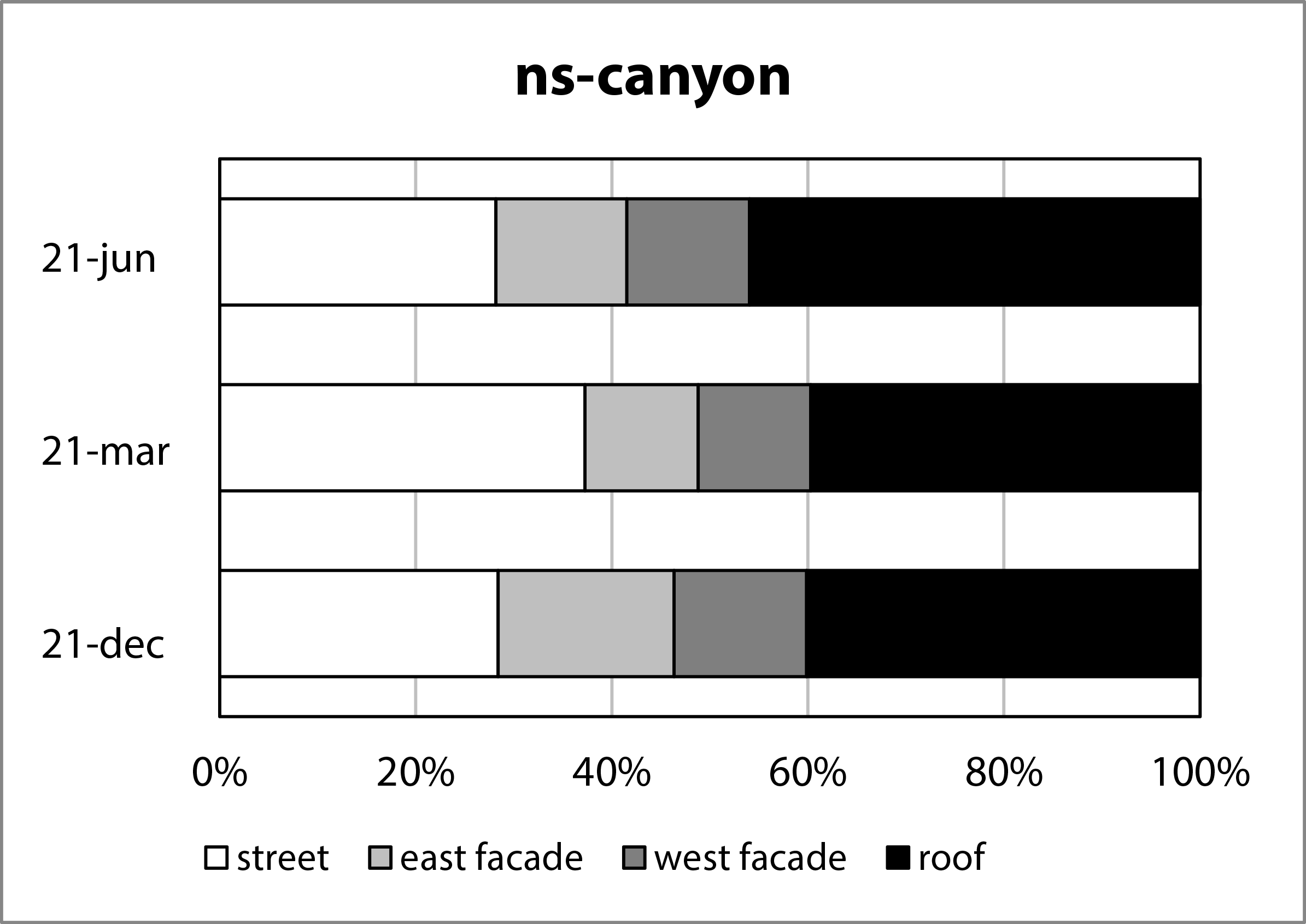
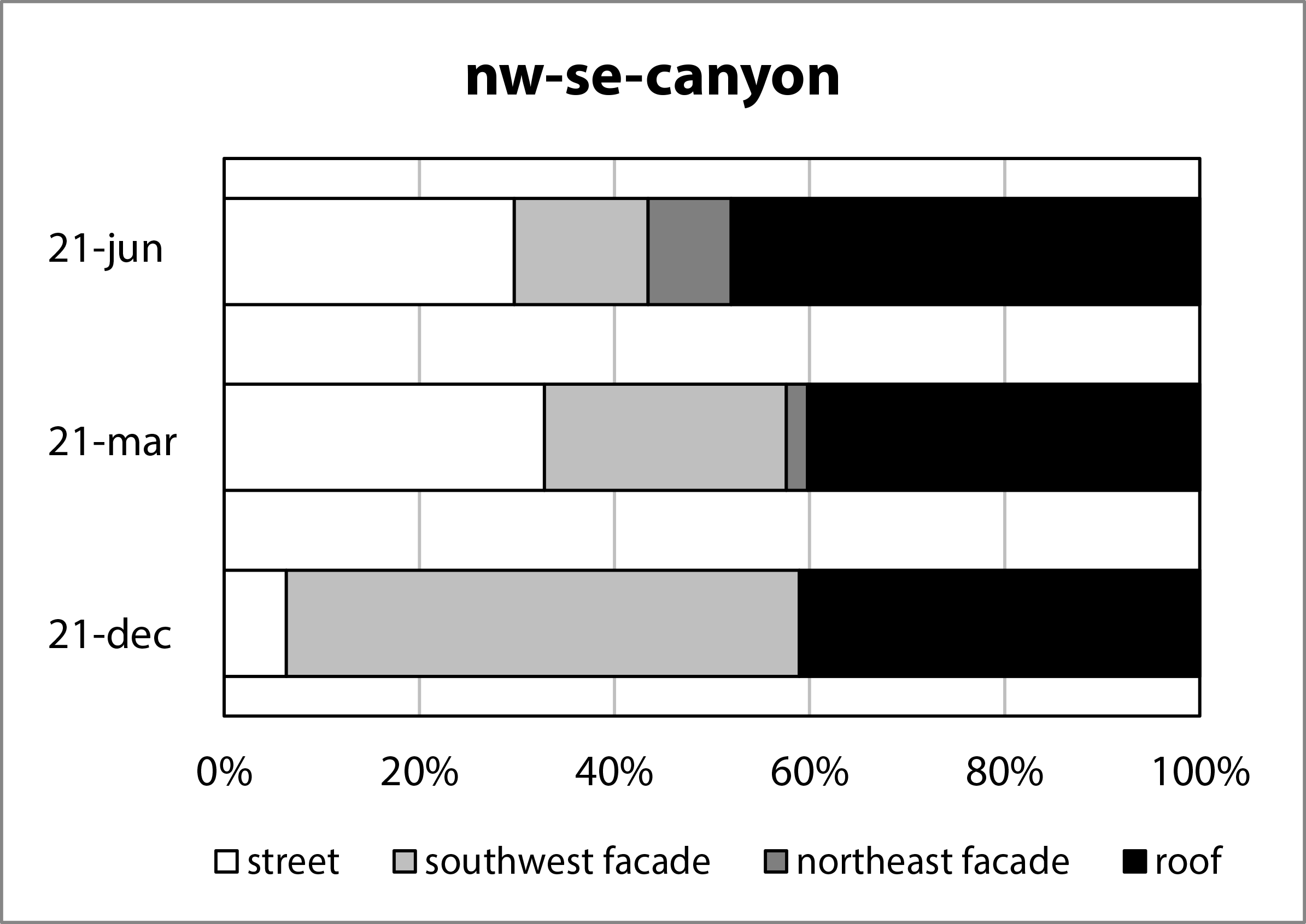
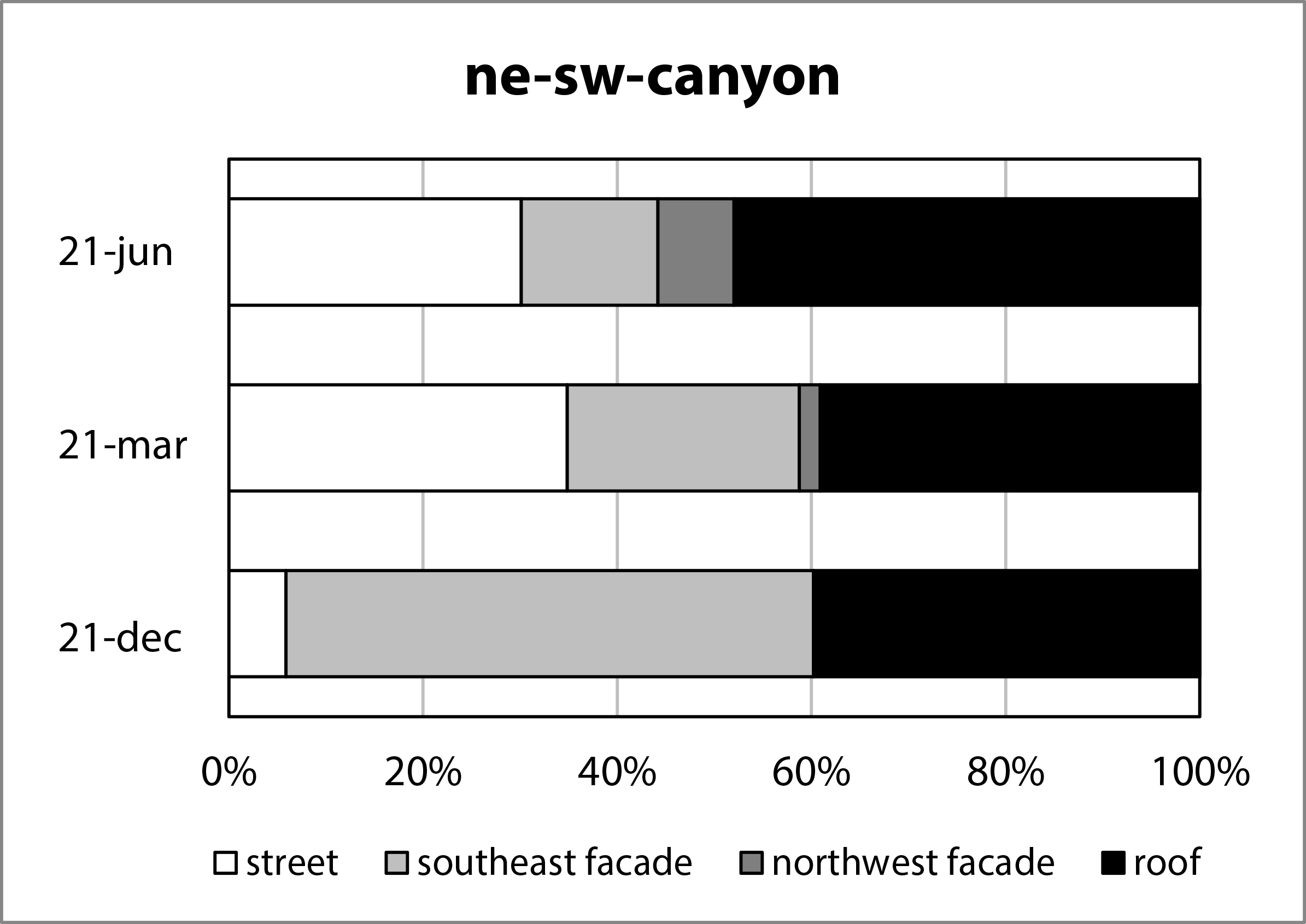
Relative share of each of the canyon surfaces of the direct radiation yield, showing the influence of Orientation. FSI = 1,6 and GSI = 0,4, H = 12m and W = 30m
East-west canyons have the disadvantage of leaving the pedestrian in shadow for most (or all) of the day in winter, but also have the benefit of rather constant direct irradiation (and shade) in spring and fall. Furthermore, they provide some shade during the hottest hours of the day in summer. North–south canyons do get some sun on the shortest day of the year, as the sun has unobstructed access to the street around noon. Northwest-southeast canyons also receive some sun in winter. For these canyons, the direct irradiation in the afternoon increases enormously until the longest day of the year, in duration as well as in percentage of directly irradiated street surface. This pattern is mirrored around solar noon for northeast-southwest canyons.
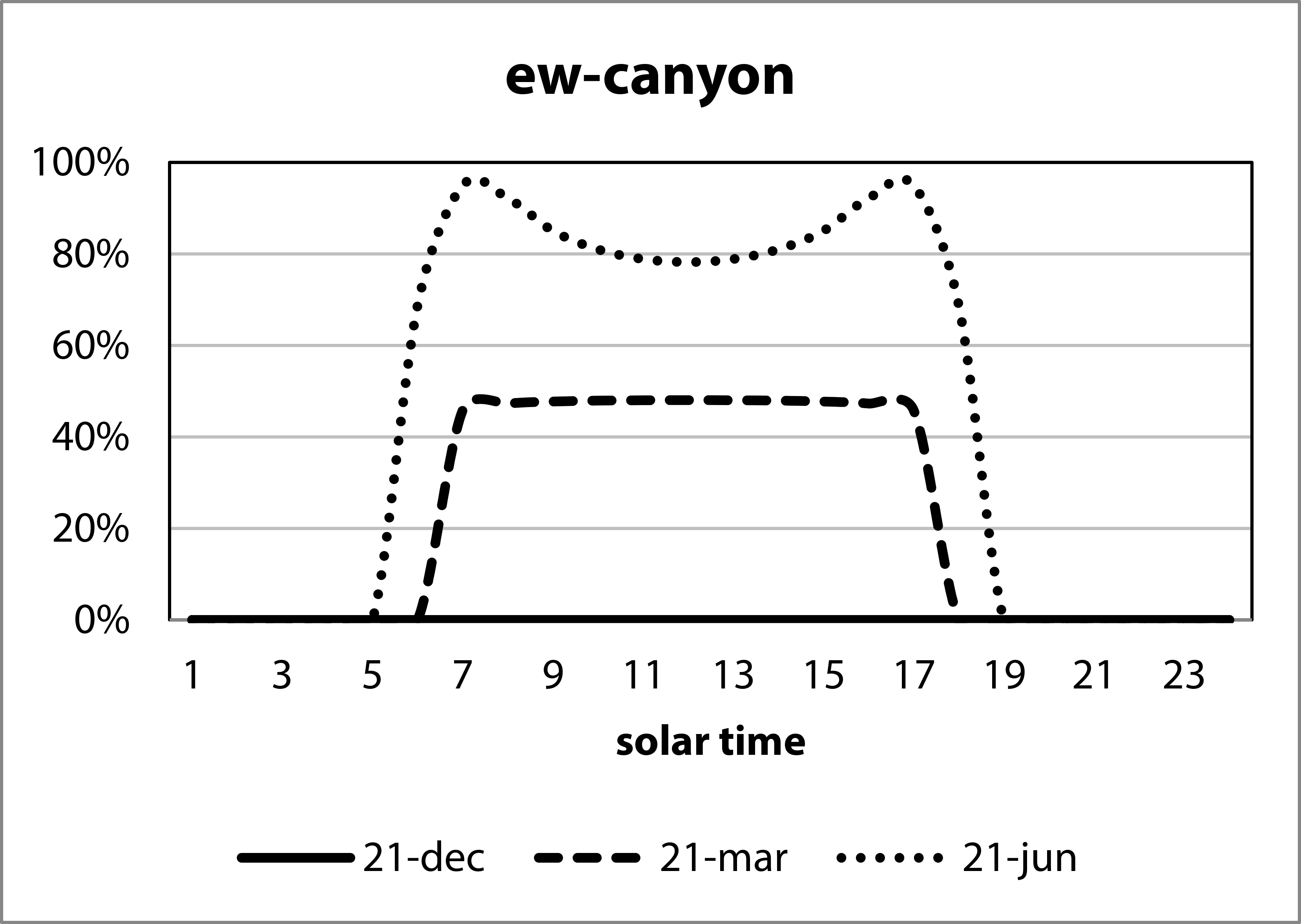
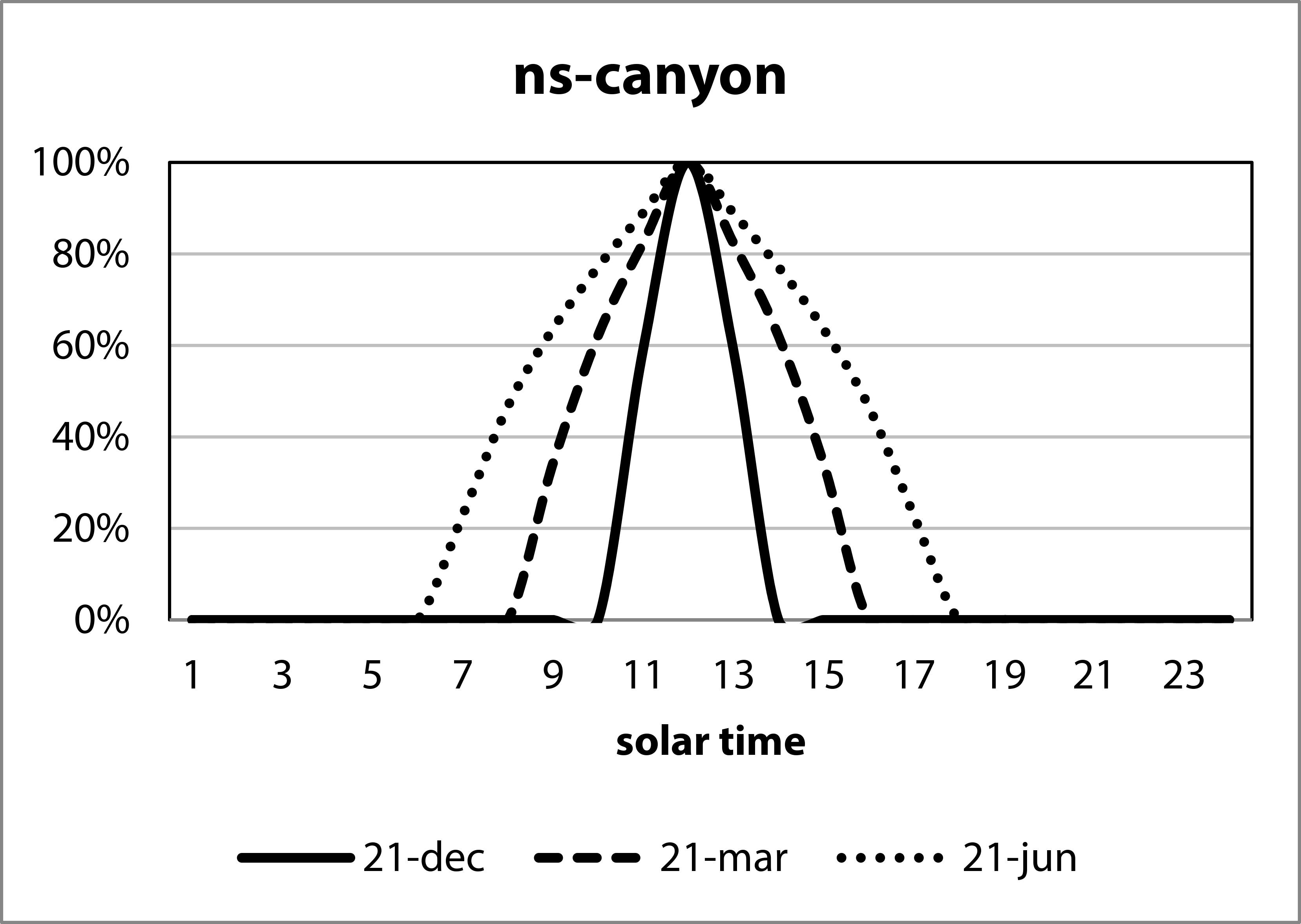
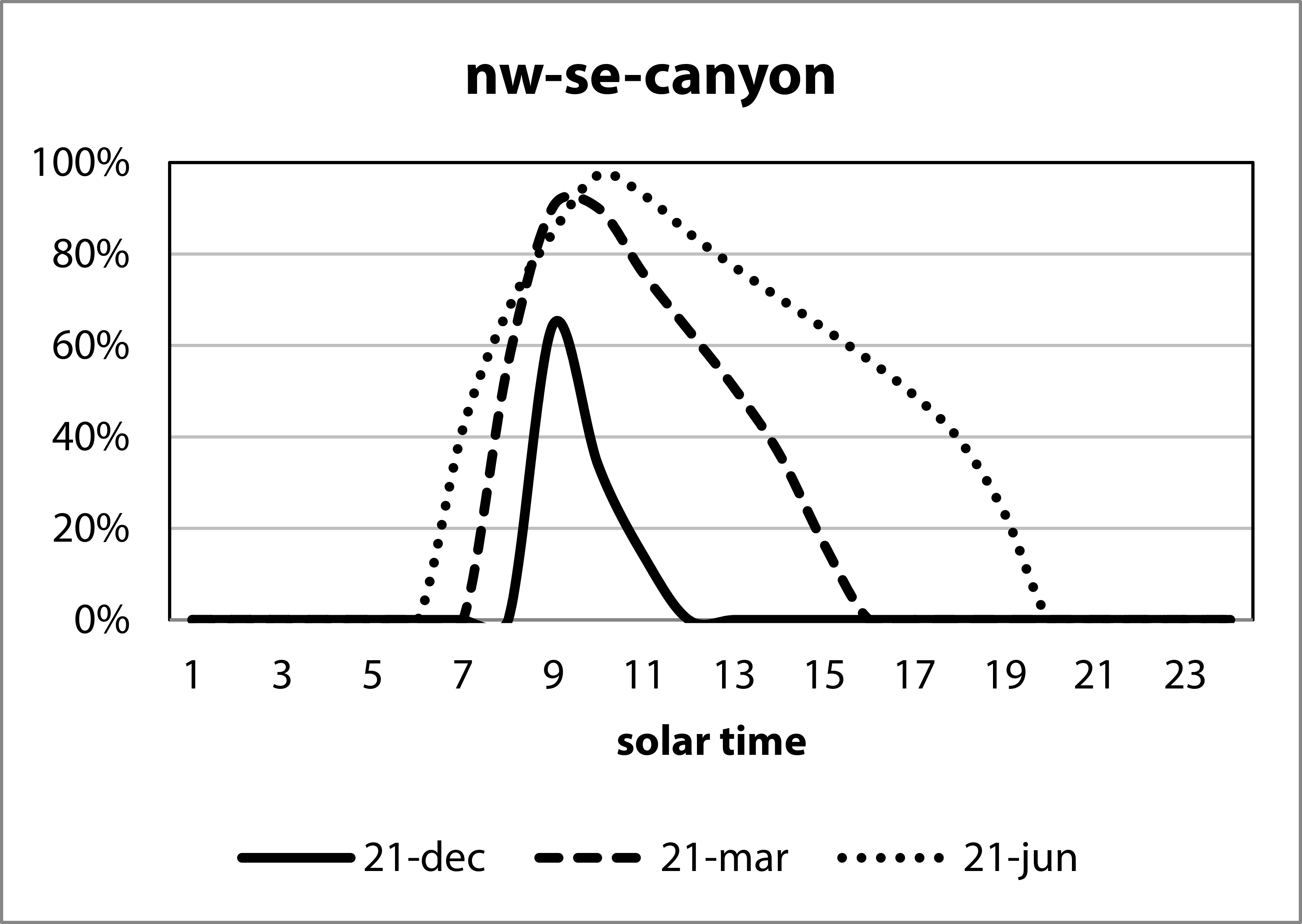
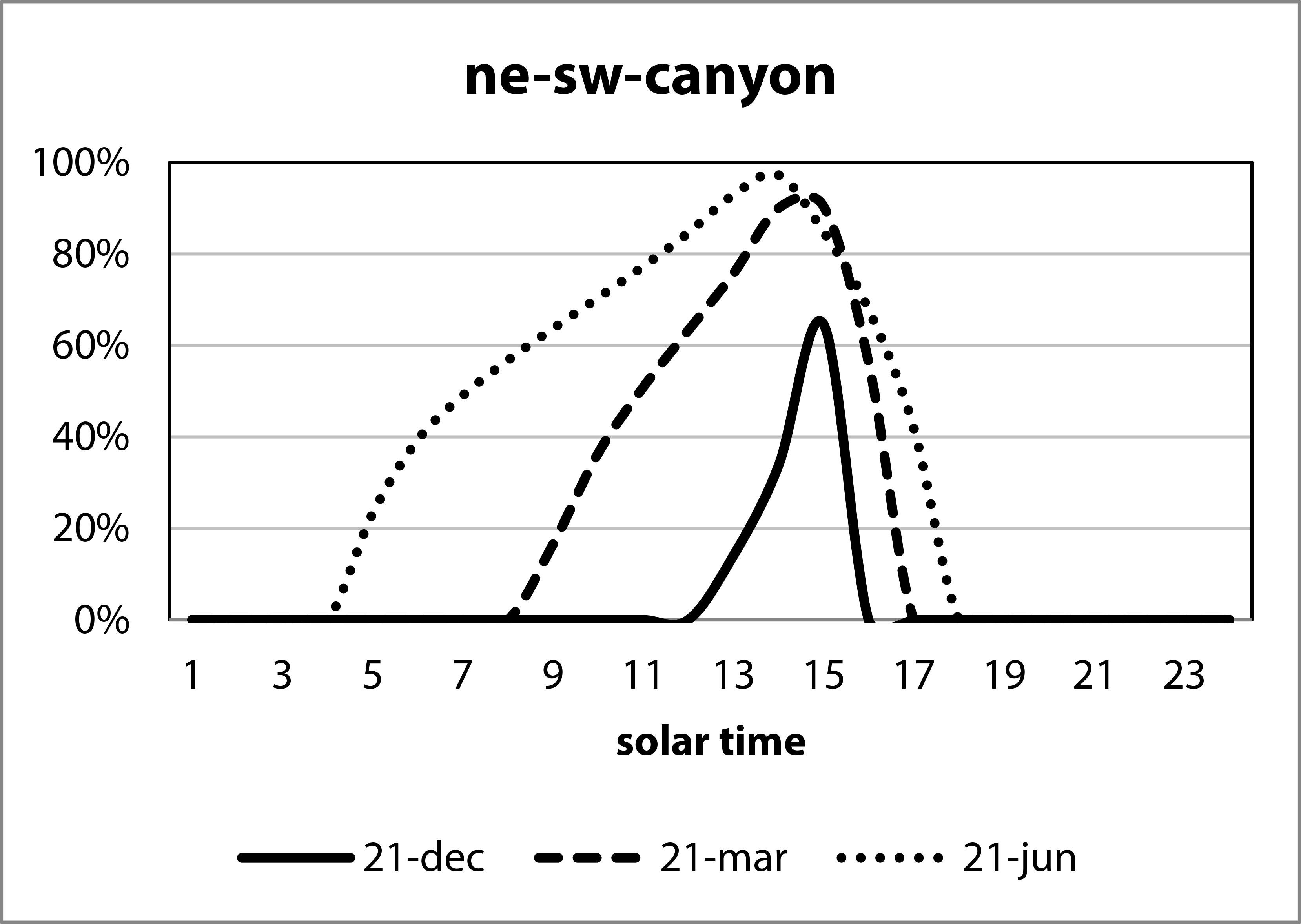
Percentage of street surface that is directly irradiated for different orientations and seasons, FSI = 1,6 and GSI = 0,4, H = 12m and W = 30m
The amount of incoming diffuse radiation is orientation-independent for a given altitude angle. Tilt-angle is important though; unobstructed horizontal surfaces receive the most diffuse orientation, vertical surfaces the least, as the radiation intensity from the sky decreases from the zenith to the horizon. The amount of outgoing diffuse radiation is both orientation and tilt-angle independent.
For an overcast sky, the zenith luminance is three times that at the horizon, and increases from horizon to zenith gradually. For a given altitude angle, the luminance is the same for all azimuth angles, so the daylight gain of a surface is orientation-independent (but not tilt-angle-independent!).

Flow patterns in the urban canyon, related to the wind direction at roof height; parallel, perpendicular or at an angle to the canyon axis
The orientation of an outdoor space with regard to the wind direction highly influences the flow pattern occurring. At wind speeds higher than 1,5 m/s and a wind direction parallel or nearly parallel to the street axis (deviation of less than thirty degrees) the wind can blow right through the canyon and there are almost no vortices. The stream-wise velocity decreases along the canyon, as air escapes the canyon vertically at roof level. If the wind is more or less perpendicular to the canyon axis three flow regimes can be distinguished: isolated roughness flow, wake interference flow and skimming flow, which are closely related to the height to width ratio of the canyon. All these flow regimes consist of a complex system of vortices, which rotate cross-canyon. Wind at oblique angles to the canyon axis will produce an along-canyon flow component added to the cross-canyon vortex structure, resulting in a cork screw-like airflow through the urban canyon. This flow pattern is basically a superposition of the cross-canyon (perpendicular) and along-canyon (parallel) flow components.
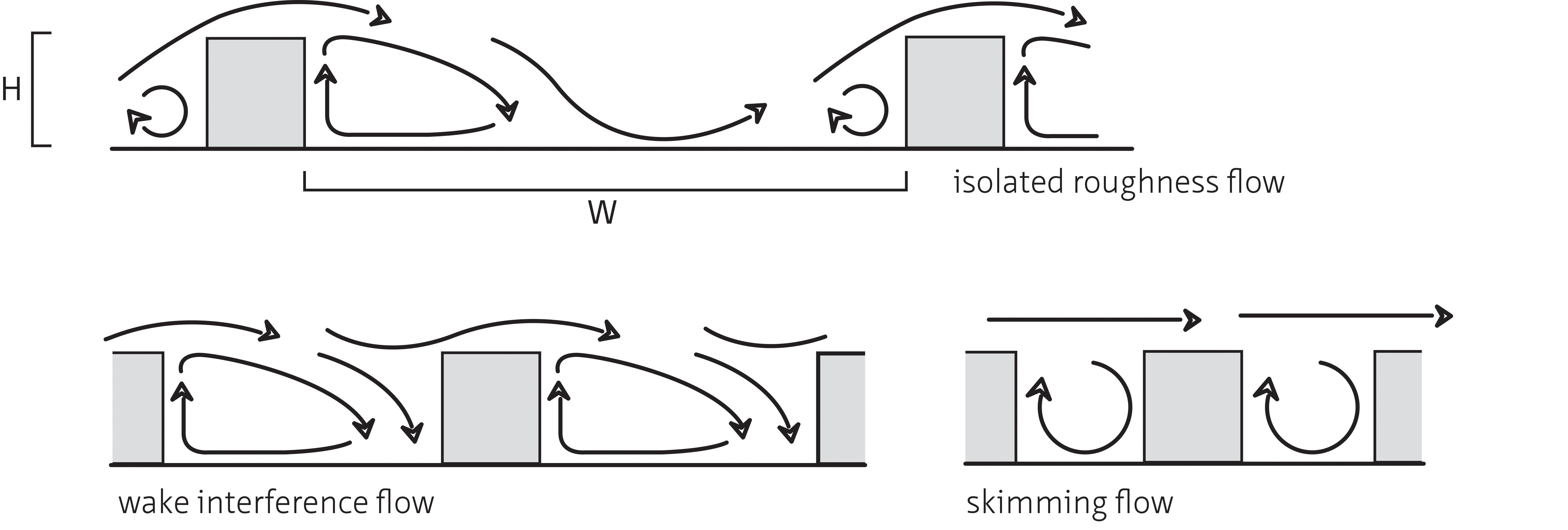

Flow patterns in an urban canyon with wind perpendicular to the canyon axis
In street grids, the streets (most) perpendicular to the wind direction may experience transverse flows at the downwind side of the street as a result of the varying pressure in the street parallel to the wind direction. Alternating suction at the ends of the perpendicular streets can cause the airflow in the street to change direction 180 degrees. Transverse flows are not present when the wind is oblique to the street grid, but corner streams forming at the street corners will flow along the windward façade of the street. Together with the (along-canyon component of) the corkscrew flow this may cause discomfort.
For flow perpendicular to a street: In case of an in-canyon source at street level (usually traffic) emitting continuously, the lowest pollutant concentrations can be found along the windward side of downwind building, where above-roof ambient air with relatively low concentration enters the street canyon by the downward vortex circulation on the downwind side. The pollutant concentrations along the windward façade are almost constant with height. The highest concentrations can be found on the leeward side close to the upwind building, where a strong upward motion exists. Here, the concentration decreases upward. After emission has stopped, the highest concentration can be found at the centre of the vortex (or vortices), where they are trapped by the low wind speed, and concentrations decrease outwards from there. When pollutants from other sources are carried to the canyon from above roof level, the highest concentrations are found at the downwind side of the canyon, through advection at the downward motion of the vortex.

Schematic of pollutant concentrations in case of perpendicular flow.
When the ambient wind direction is normal to a regular street grid with ground-level emissions in al streets, the highest pollutant concentrations will be found near the walls of the streets parallel to the ambient wind direction, as the pollutants from the streets perpendicular to the ambient wind direction escape the streets by the outward flow dominant near the street bottom and accumulate in the street canyons parallel to the ambient wind directions - together with the pollutants emitted there. As the incident wind angle increases, pollutant escape from the streets decreases, as the pollutants are trapped in the vortices behind the buildings.
A wind speed gradient in the opposite direction of the sound propagation path (upwind sound propagation) causes sound rays to bend upwards, creating a shadow zone near the ground where little sound enters. Downwind propagation causes sound rays to bend downwards, leading to higher sound levels near the ground than under neutral atmospheric conditions The effect depends on the vector component in the direction of sound propagation; there is no effect if the sound propagates crosswind and the effect is the greatest if it propagates exactly downwind or upwind.